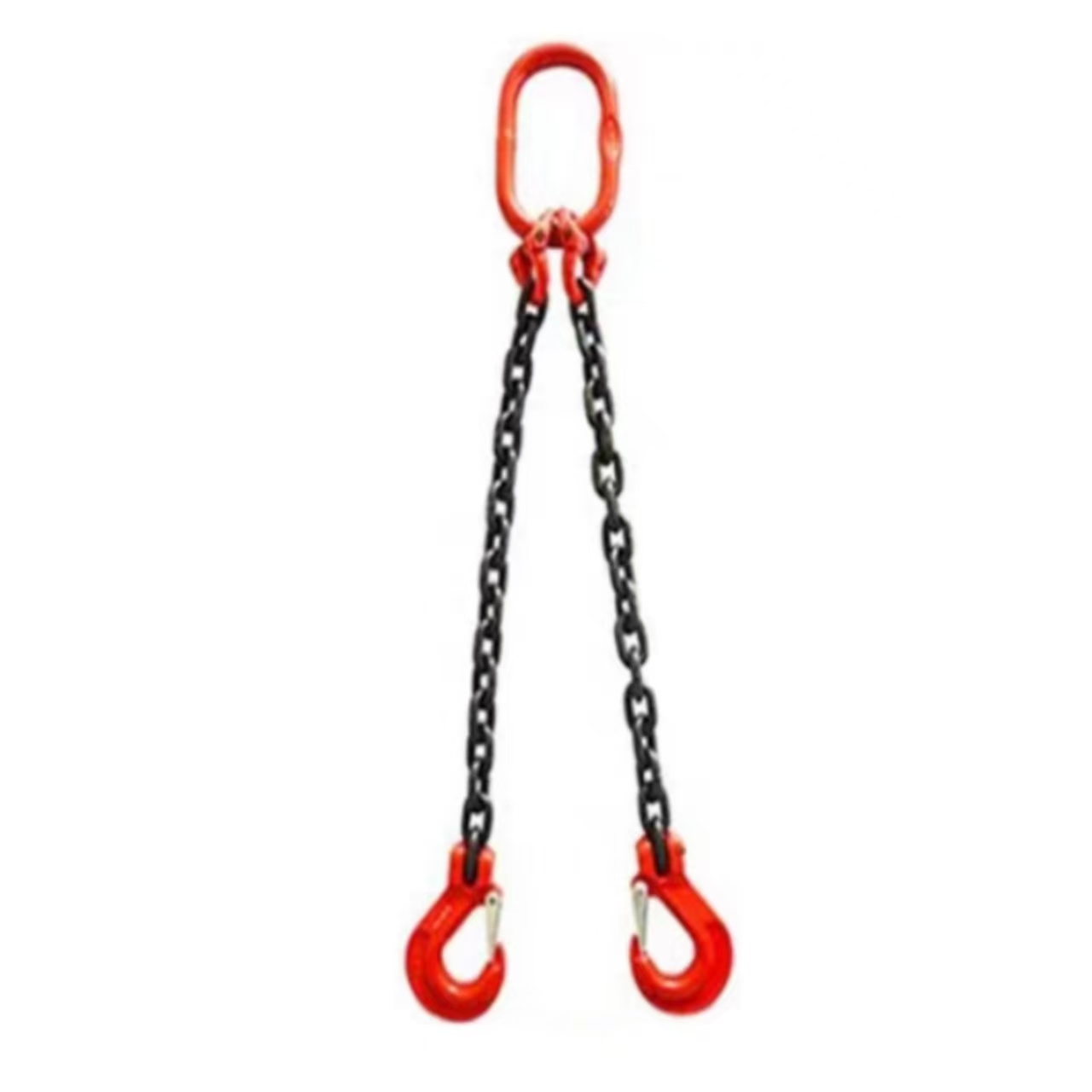Our staff will contact you within 12 hours, You can also contact us through the following ways:
Contact US WhatsApp: +8618766656705
- Email: [email protected]
- Tel: +8618766656705
- Web: https://www.toponechain.com/
When lifting heavy loads in construction, shipping, or manufacturing, a double chain sling is one of the most reliable tools available. Built from high-strength alloy steel, a double leg chain sling offers balance, durability, and superior performance compared to single-leg slings. This guide explains what makes double chain slings so effective, where they are used, and how to ensure maximum safety and efficiency.
A double chain sling (also known as a two-leg chain sling) consists of two alloy steel chain legs connected to a master link at the top and fitted with hooks at the ends. This configuration allows it to lift loads evenly, reducing stress on both the load and the lifting equipment.
Key features:
Two lifting points for balanced load distribution.
Flexible configurations with different hook types, such as clevis sling hooks or self-locking hooks.
Available in G80 or G100 grades, ensuring compliance with international lifting standards (EN 818, ASME B30.9).

Compared with single-leg or synthetic slings, the double leg chain sling provides several advantages:
Improved Stability: Two legs support the load, minimizing swinging.
Higher Capacity: Each leg shares the weight, making it suitable for heavy and irregular loads.
Durability: Resistant to heat, sharp edges, and harsh environments.
Versatility: Can be used at different lifting angles depending on the application.
These benefits make double chain slings a preferred choice in industries such as construction, steel production, mining, and shipbuilding.
Common uses for double leg chain slings include:
Construction: Lifting beams, precast concrete, and machinery.
Marine and Offshore: Handling anchors, steel plates, and heavy marine equipment.
Manufacturing: Moving molds, tanks, and large components.
Mining: Lifting heavy conveyor parts, drilling tools, and equipment.
Because of their flexibility, double chain slings can safely lift uneven or asymmetrical loads when positioned correctly.
While strong and reliable, safe usage of double chain slings requires following proper rigging practices:
Check Working Load Limits (WLL): Never exceed the rated capacity, which depends on chain diameter, grade, and lifting angle.
Inspect Before Each Use: Look for cracks, wear, elongation, or damaged hooks.
Understand Angle Factors: The wider the angle between legs, the lower the safe lifting capacity.
Temperature Awareness: G80 and G100 chains should not be used above 200°C.
Proper Storage: Keep slings dry and away from chemicals to avoid corrosion.
By following these safety practices, companies can reduce risks and extend the service life of their lifting chains.
Feature | Single Leg Sling | Double Chain Sling |
Stability | Less stable | Balanced and secure |
Capacity | Limited to one chain’s WLL | Higher due to two legs sharing the load |
Applications | Simple vertical lifts | Heavy, asymmetrical, or wide loads |
Safety | More prone to swinging | Safer, especially at controlled angles |
This table shows why industries prefer a double leg chain sling for challenging lifts.
The double chain sling provides the perfect balance of strength, stability, and versatility for heavy-duty lifting. Whether in construction, mining, or marine industries, a double leg chain sling ensures safe and efficient operations.
Looking for certified chain slings? At TOPONE CHAIN, we manufacture high-quality G80 and G100 double chain slings with TÜV and CE certifications. Contact us today for standard or customized solutions tailored to your lifting needs.